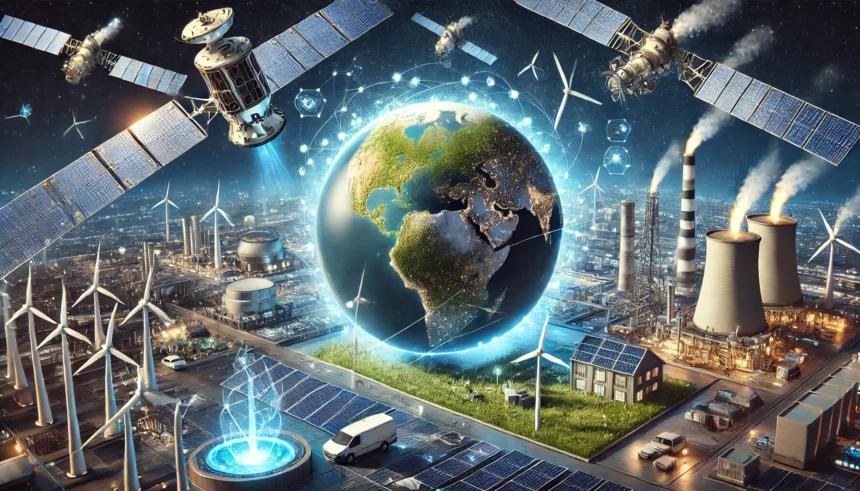More than half of the world’s population is already feeling the impacts of the climate crisis. As we race towards net zero, technology is playing a key role in managing resources and speeding up decarbonization. Let’s explore three surprising ways technology is being deployed to tackle climate change.
Earth Observation for Nature Conservation
What is Earth Observation (EO)?
- Definition: Gathering information about the Earth’s surface, waters, and atmosphere using remote sensing platforms (ground, air, satellite).
- Purpose: Monitor and assess natural and human-made environments for various applications.
Economic Impact
- Potential: Could drive $3.8 trillion in economic benefits by 2030.
- Climate Benefits: EO can inform interventions that reduce greenhouse gas emissions by over 2 gigatonnes annually.
Global Ecosystem Mapping
Yana Gevorgyan, Secretariat Director of Group on Earth Observations, highlights the importance of mapping ecosystems:
- Current State: Over half of the world’s ecosystems are not mapped.
- Initiative: ‘Atlas’ aims to create a single, open online resource of high-quality ecosystem maps.
- Impact: This resource will help governments and individuals take action for nature conservation.
AI for Decarbonization
Role of Artificial Intelligence (AI)
- Application: Used in scientific research, including drug development and sustainable chemical creation.
- Insilico Medicine’s Pharma.AI: A platform facilitating new drug development and sustainability solutions.
Carbon Capture Solutions
Founder Alex Zhavoronko of Insilico Medicine explains:
- Generative AI: Used to create chemicals that efficiently capture and release carbon in a reusable form.
- Sustainability Vision: Developing sustainable chemicals, fuels, and materials in partnership with other companies.
Industrial Application
- CO2 Demand: Significant demand for CO2 in biomanufacturing and other settings.
- Future Prospects: Creating materials that will allow efficient carbon capture and reuse, contributing to decarbonization and food production.
Aviation for Green Energy
Wind Turbine Transportation Challenge
Mark Lundstrom, CEO of Radia, addresses a major limitation in wind energy:
- Current Limitation: Road and rail transportation constraints limit the size of onshore wind turbine blades.
- Offshore Advantage: Offshore turbines can be significantly larger due to fewer transportation constraints.
WindRunner – The Solution
Radia’s WindRunner aims to revolutionize wind energy:
- Design: The world’s biggest plane, 12 times bigger in volume than a 747 aircraft.
- Capabilities: Can deliver giant rotor blades, allowing for the installation of larger turbines onshore.
- Impact: Could add up to 216GW to the US grid and supply up to 40% of US electricity by 2050.
Future Prospects
- Economic Opportunities: Opens up new land masses for wind energy, creating revenue streams for farmers and communities.
- Global Fleet: Radia plans to establish a global fleet to deliver parts within a 2,000km radius, making larger turbines more accessible.
Conclusion
Technology is paving the way for innovative solutions to tackle climate change. From mapping ecosystems to creating sustainable chemicals and revolutionizing wind energy transportation, these advancements are crucial for a sustainable future. By embracing these technologies, we can make significant strides towards mitigating the climate crisis and protecting our planet for future generations.
















